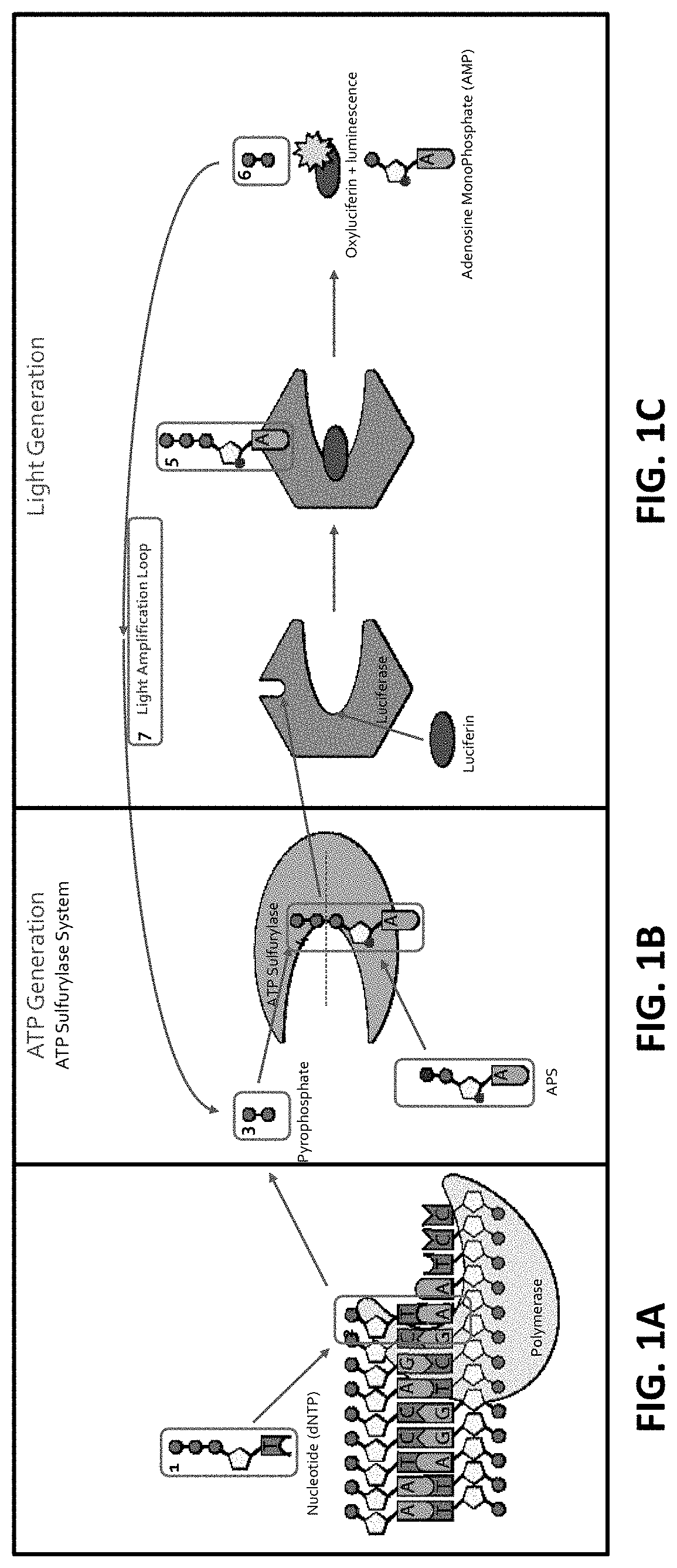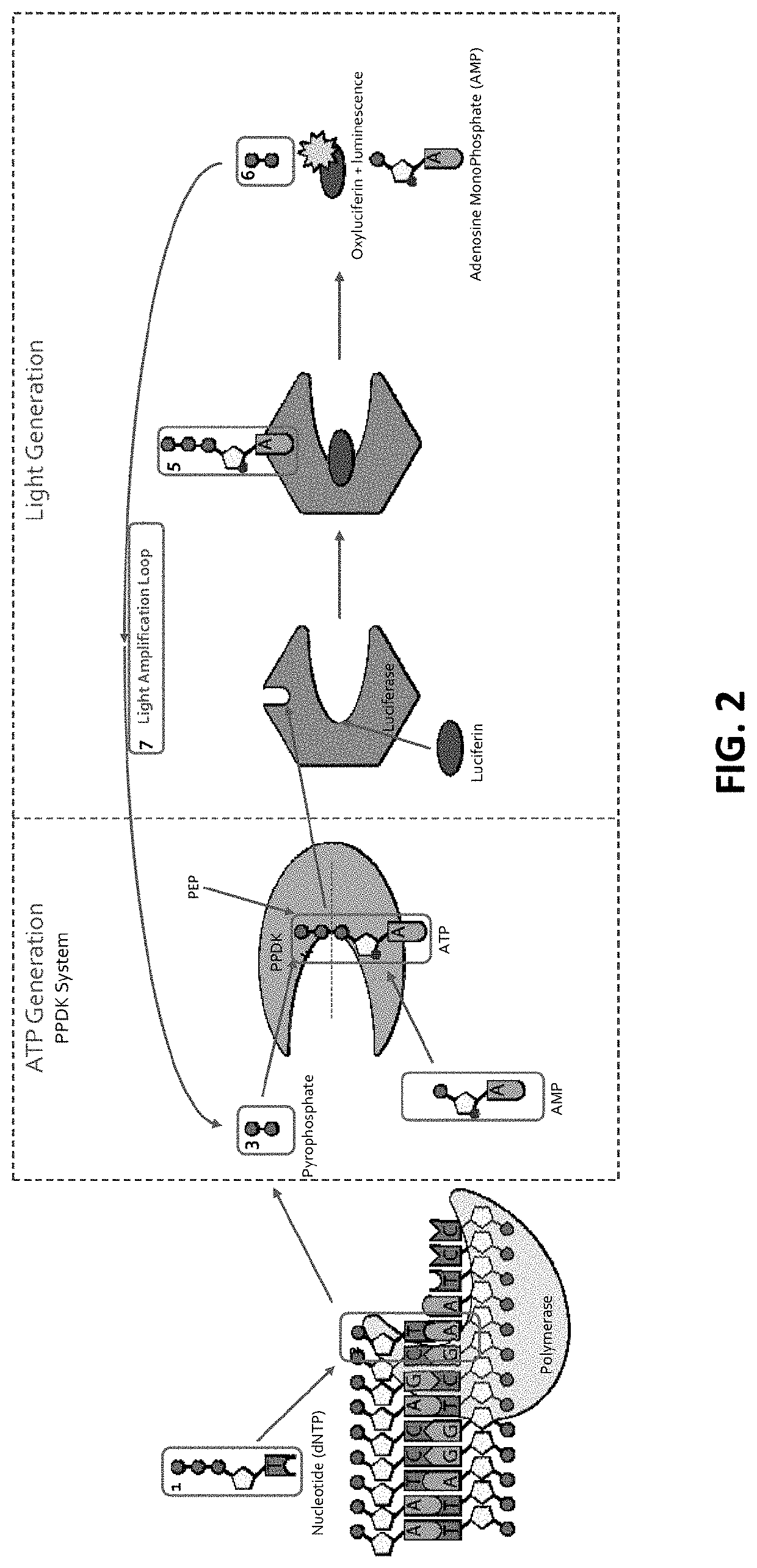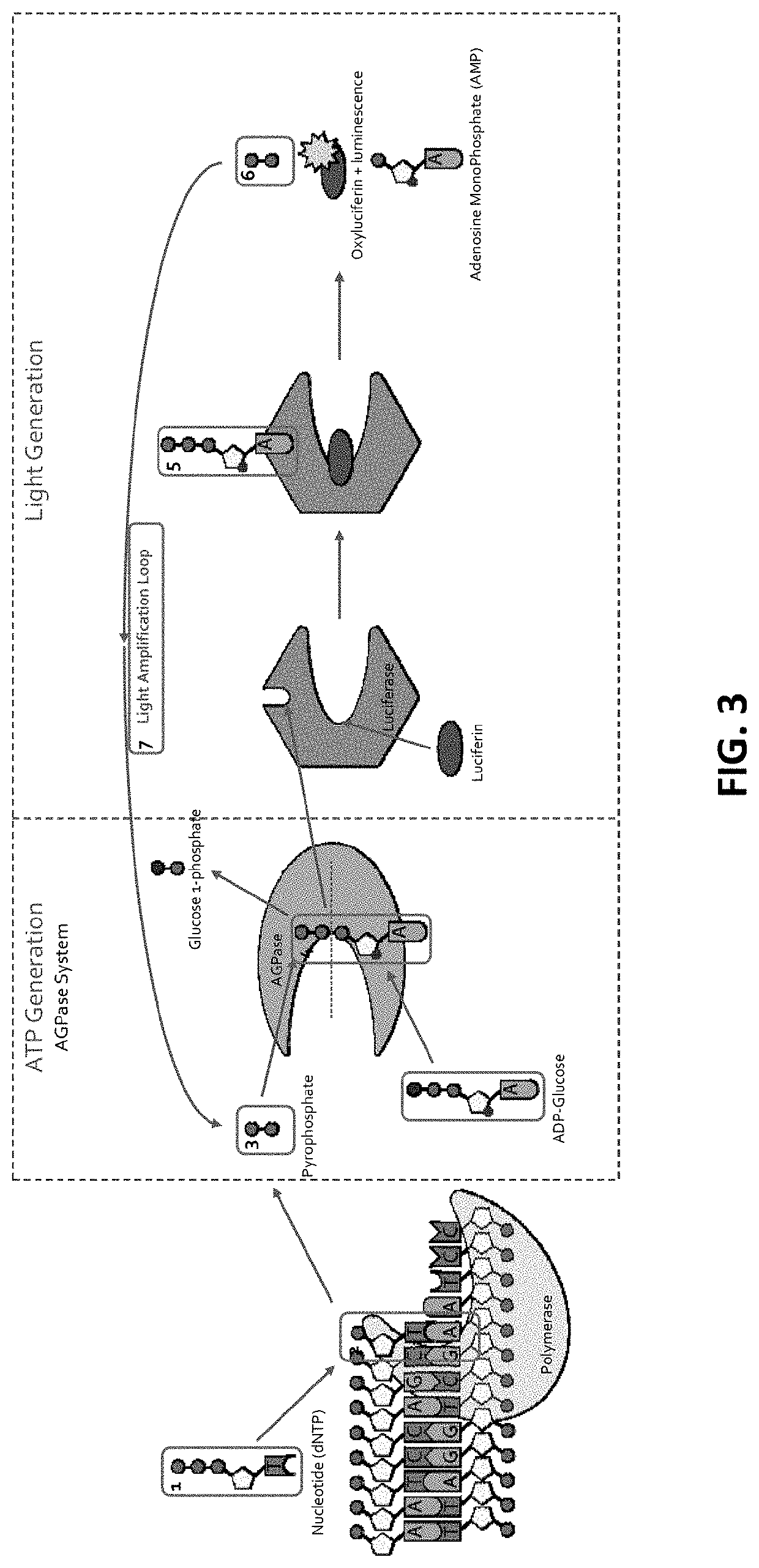Methods and devices for detecting sars-cov-2
a technology of targetnucleic acid and detection method, which is applied in the direction of material excitation, biochemistry apparatus and processes, electrical excitation analysis, etc., can solve the problem of adding another level of complexity to the overall reaction, unable to achieve high specificity of amplification in most cases, and limitations, etc. problem, to achieve the effect of increasing the signal intensity
- Summary
- Abstract
- Description
- Claims
- Application Information
AI Technical Summary
Benefits of technology
Problems solved by technology
Method used
Image
Examples
example 1
nce-Based Target Nucleic Acid Detection
[0251]Once released from an incorporated dNTP, the pyrophosphate (PPi) interacts with ATP sulfurylase, which binds the pyrophosphate to adenosine 5′-phosphosulfate (APS) yielding ATP (FIGS. 1B and 1C).
[0252]The ATP (ATP) produced above is used to bind to Firefly luciferase that uses luciferin as a substrate (FIG. 1C). With the ATP (ATP) acting as a cofactor, Firefly luciferase catalyzes luciferin (FIG. 1C; and FIG. 2, FIG. 3 and FIG. 10). As a result of the enzymatic catalysis, luciferin is converted into oxyluciferin and luminescence is also produced (FIG. 1C). As side products of the reaction, adenosine monophosphate and PPi are generated. This results in a detectable luminescence emission during the discreet and limited period of the luminescence (FIG. 1C). Accordingly, as a result of dNTP interacting with the DNA polymerase, luminescent light is generated upon luminescence produced by the luminescence reaction produced by the luminescence-e...
example 2
s Affecting Luminescence Generation
example 2a
Varying the Respective Concentrations of ATP Sulfurylase, Firefly Luciferase, and the Luminescence-Substrate—dGTP-Coumarin
[0254]In this reaction, a 300 bp single-stranded DNA template was produced made up of all cytosine bases except for the start sequence of a 20 bp region formed by a mixture of 4 bases (dATP, dGTP, dTTP, dCTP). In addition to the template DNA, the reaction contained primer oligonucleotides complementary to the start sequence, dGTP-Coumarin, ATP Sulfurylase, Adenosine 5′-phosphosulfate, Firefly luciferase (as the luminescence-enzyme), and luciferin (as the luminescence-substrate). The effects of varying the respective concentrations of ATP Sulfurylase, Firefly luciferase, and the luminescence-substrate, dGTP-Coumarin are shown in FIGS. 4-6, respectively. As can be seen in FIGS. 4-6, starting with dGTP-Coumarin (which is a dGTP labeled by Coumarin at the terminal phosphate), this concatenated three-enzyme system of Polymerase-ATP Sulfurylase-Firefly luciferase utili...
PUM
 Login to View More
Login to View More Abstract
Description
Claims
Application Information
 Login to View More
Login to View More - R&D
- Intellectual Property
- Life Sciences
- Materials
- Tech Scout
- Unparalleled Data Quality
- Higher Quality Content
- 60% Fewer Hallucinations
Browse by: Latest US Patents, China's latest patents, Technical Efficacy Thesaurus, Application Domain, Technology Topic, Popular Technical Reports.
© 2025 PatSnap. All rights reserved.Legal|Privacy policy|Modern Slavery Act Transparency Statement|Sitemap|About US| Contact US: help@patsnap.com



